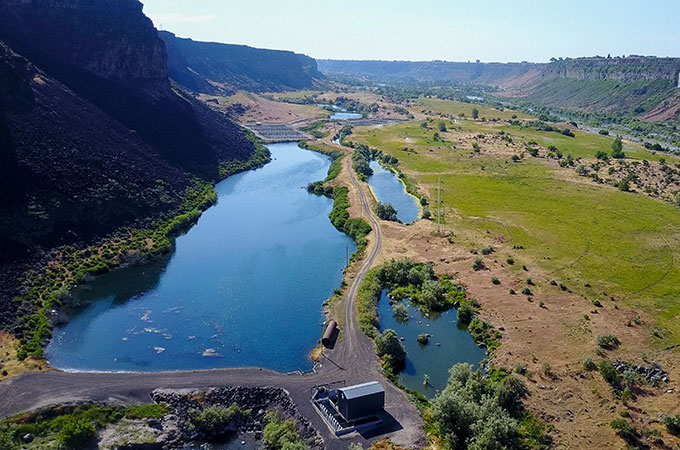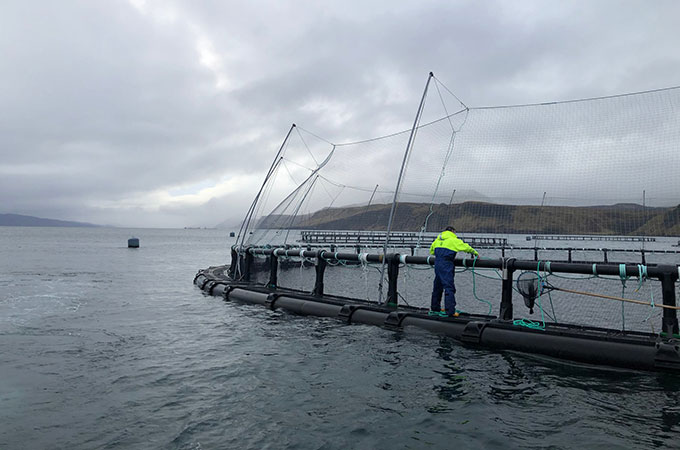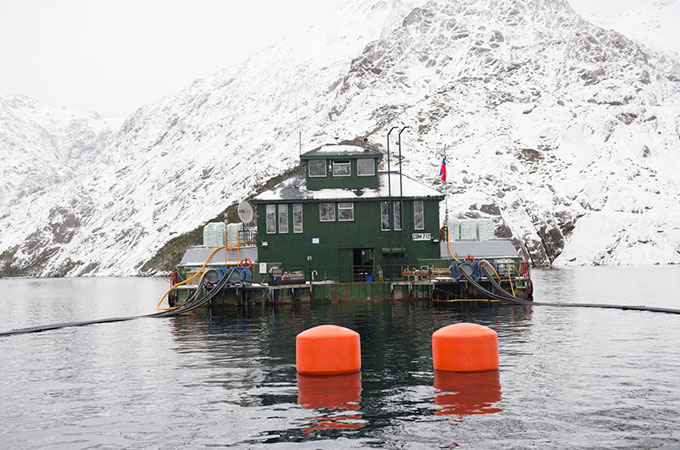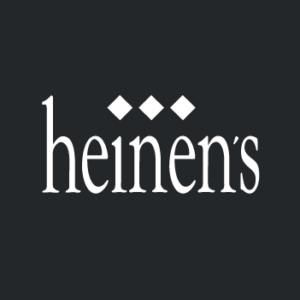We Know Our Sources: Heinen’s Farmed Seafood Producers

This post was written by Heinen’s partner, Halle Snavely.
Farmed seafood hasn’t always had a reputation for being “clean.” The industry used to be known for high pen densities and its detrimental impacts on the environment. Farmed seafood was often bland tasting and lacked the color, texture and vibrancy of wild seafood. However, with depleted ocean stocks around the world becoming a growing problem, the tides are changing.
In response to skyrocketing demands for seafood, the farmed seafood industry has made huge strides toward sustainability. And in terms of quality, there are plenty of farmed seafood options giving wild-caught seafood a run for its money.
We strongly believe in providing our customers with options, so if wild-caught seafood is your preference, it will always be available, but we’re proud to be at the forefront of the farmed seafood industry transformation alongside many of the most innovative producers in the US and around the world.
So, is farmed seafood really an inferior option? We spoke to a handful of our trusted farmed seafood partners to uncover the truth!
Riverence Trout
Riverence was founded in 2014 on a mission to transform the aquaculture industry. With demand for seafood on the rise, the founders recognized that aquaculture was how people were going to get their fish in the future. By focusing on improved genetics, Riverence aimed to curate a selection of genetic traits that would help fish thrive in aquaculture environments without any genetic engineering.
Working out of 14 land-based, spring water farms in southern Idaho, Riverence raises rainbow trout and steelhead trout and produces about 23 million pounds of fish per year. They also have a company called Riverence Brood, based out of Washington state, which produces Atlantic salmon, Coho salmon and rainbow trout eggs.
Todd English, Director of Sustainability for Riverence, says that they have employed “technology that allows us to be able to identify specific genetic traits and begin to tailor them to specific farms so that our aquaculture companies can see faster growth, lower mortalities and higher quality fish.”

In addition, Riverence also has an SQF (Safe Quality Food) certified processing plant and self-distributes their product with a fleet of 13 tractor-trailer trucks. According to Todd, “what started as a way to improve the genetics of aquaculture has really blossomed into this network of companies that are designed to revamp the trout industry.”
Riverence raises their fish in what they call outdoor flow-through raceways, where the fish spend their lives swimming through fresh spring water from a reservoir in the Sawtooth Mountains of Idaho. The raceways are made of concrete and are about 100 feet long, 15 feet wide and 4-5 feet deep.
The fish waste is aggregated in a 10-foot-long section at the end of the raceway and is vacuumed out and collected into offline settling ponds, where the sun evaporates most of the water. Then, local regenerative farmers pick up the waste, compost it and later use it to fertilize their farms.
Riverence raises white rainbow trout and red-fleshed steelhead trout. It’s the exact same species, but they add a supplement called astaxanthin to the feed for the steelhead trout, which they get from a company that naturally sources it and ferments it in bacteria. Rainbow trout that are indigenous to Idaho are naturally pink or red-fleshed because they consume astaxanthin through their diet. Riverence has found a way to stay true to the origins of the fish by naturally mimicking this process.

They also have a number of by-products that come out of their processing plant, which are either composted for fertilizer or hydrated and turned into feed for high quality pet food. In other words, nothing from the Riverence operation goes to waste.
Riverence generates about 30% of their electricity from three large turbines that are powered with the water they capture from the reservoir, and they recently became the first land-based finfish aquaculture facility to be certified by the Aquaculture Stewardship Council’s Freshwater Trout Standard.
Isle of Skye Organic Salmon
Organic Sea Harvest is one of few producers in the world that raises 100% organic salmon. Founded in 2017, their salmon is raised in sea cages in the open ocean off the picturesque coast of the Isle of Skye in northwest Scotland. They currently operate two farming locations, each containing 12 pens, and are actively working to open additional sites.
Operating in a remote area offers several advantages for aquaculture, notes Organic Sea Harvest’s US Sales Director James Macknight. He paints a good picture of their operation. “We’re out in the open ocean, which means the currents are very strong, the oxygen level is excellent, it’s also consistent, the salt level is excellent, it’s also consistent,” he says.
With a sea cage density of 10 kg of salmon for every 1 sq. meter (1% salmon to 99% seawater), the fish have plenty of room to swim against the strong currents of the open ocean, which allows them to use their muscles, which contributes to their rich flavor and texture.

In addition to low pen densities, Organic Sea Harvest’s organic certification benefits several other factors including their feed, which is 100% organic, and their handling and harvesting standards. To make the harvesting process more comfortable for the fish, they pump oxygen into the area to help them stay calm and relaxed. Beyond organic certification, Organic Sea Harvest is also certified by the Royal Society for the Prevention of Cruelty to Animals.
Much like Heinen’s, Organic Sea Harvest is deeply connected to the community and believes in taking care of its people, which is why they have an ongoing fund that supports the community and the families of their workers. The community and the dedication of the people who work to raise these fish are a big part of how they’ve built their business. Spreading that message is as much a part of Organic Sea Harvest’s mission as raising the best organic salmon.
“We want to sell our fish to people who can communicate the message and the story correctly. We can do all the work to raise phenomenal fish, but if we don’t pass it on to the right people who will portray that story to their customer, it’s all lost. We want to clear the confusion for the customer so they trust that message. Not just with our salmon, but with any aquaculture that’s done the right way,” says Macknight.
Sixty South Salmon
Located in the extremely remote Torres del Fuego region of Chile, Sixty South salmon is raised in pristine ice-cold Antarctic waters, far away from any city or industry. Their commitment to protecting the ecosystem is as beneficial to the health of the fish as it is to the environment, and it is why they are able to produce such a high-quality fish.
The cold temperatures of these waters help mitigate the growth of bacteria and parasites that impact salmon farming operations in other regions of the world. The powerful tidal currents continuously refresh the water with new oxygen and drain the fjords (long, narrow, deep inlets of the sea between high cliffs) that the farms are located within, while ensuring that none of the fish waste impacts the environment.

Sixty South salmon is never treated with antibiotics, hormones or antifouling chemicals, and they make sure they follow a less-than-one-to-one feeder fish ratio. They also use sophisticated feeding technology to give the salmon the right levels of nutrition without overfeeding them.
In this remote region, community is everything. Sixty South is the largest local employer in the region and actively gives back to the community of Porvenir through local programs that support education, infrastructure, sports, recreation, social care, community action and technical trainings. They subsidize a housing construction program and have donated over $600,000 to the local community.
Verlasso Salmon
Southern Chile is home to the world’s second largest aquaculture industry. The Patagonia region, where Verlasso is located, has some of the best conditions for salmon farming in the world. They benefit from the Humboldt current, which is known as the earth’s richest current due to its cold water and low-salinity. This gives the fish a swift current to swim against, allowing them to develop the muscle structure needed for a healthy, tasty fish.

Verlasso closely monitors their brood and selects for the best possible traits, including strength, appearance, fat levels, flavor and disease resistance. They keep a low pen density, with two fish for every metric ton of water, which is half the density of a traditional salmon farm. They also maintain a long fallowing cycle, which gives the waters time to fully rejuvenate. Verlasso was the first farmed raised salmon to be elevated to the “Good Alternative” category by the Monterey Bay Aquarium Seafood Watch.
Heinen’s Director of Seafood, Marty Gaul has visited Verlasso and describes the trek to get there. “It’s a 3-hour flight to Miami, then to Santiago is 10 hours, from Santiago to Puerto Montt is another 2 hours, then you’re on a puddle jumper for 45 minutes, and then you hop on a boat for another 2 hours to get down to the closest Verlasso salmon farm. I saw first-hand how they pull the fish out of the farm, process it and put it on a plane all in the same day. It’s all fresh, not previously frozen. It’s amazing how the fish gets to us as fresh as it does.”


